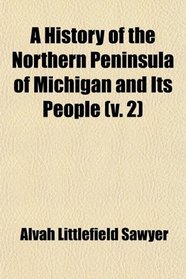Search -
A History of the Northern Peninsula of Michigan and Its People (v. 2)
A History of the Northern Peninsula of Michigan and Its People - v. 2
Author:
Purchase of this book includes free trial access to www.million-books.com where you can read more than a million books for free. This is an OCR edition with typos. Excerpt from book: position during the absence of the pastor, Rev. Father Francis X. Bechr, in Rome. After leaving Houghton, Father Poulin spent two years as pastor of St. Jean Bap... more »
Author:
Purchase of this book includes free trial access to www.million-books.com where you can read more than a million books for free. This is an OCR edition with typos. Excerpt from book: position during the absence of the pastor, Rev. Father Francis X. Bechr, in Rome. After leaving Houghton, Father Poulin spent two years as pastor of St. Jean Bap... more »
ISBN-13: 9781459016989
ISBN-10: 145901698X
Publication Date: 8/5/2009
Pages: 558
Rating: 1
ISBN-10: 145901698X
Publication Date: 8/5/2009
Pages: 558
Rating: 1
4.5 stars, based on 1 rating




